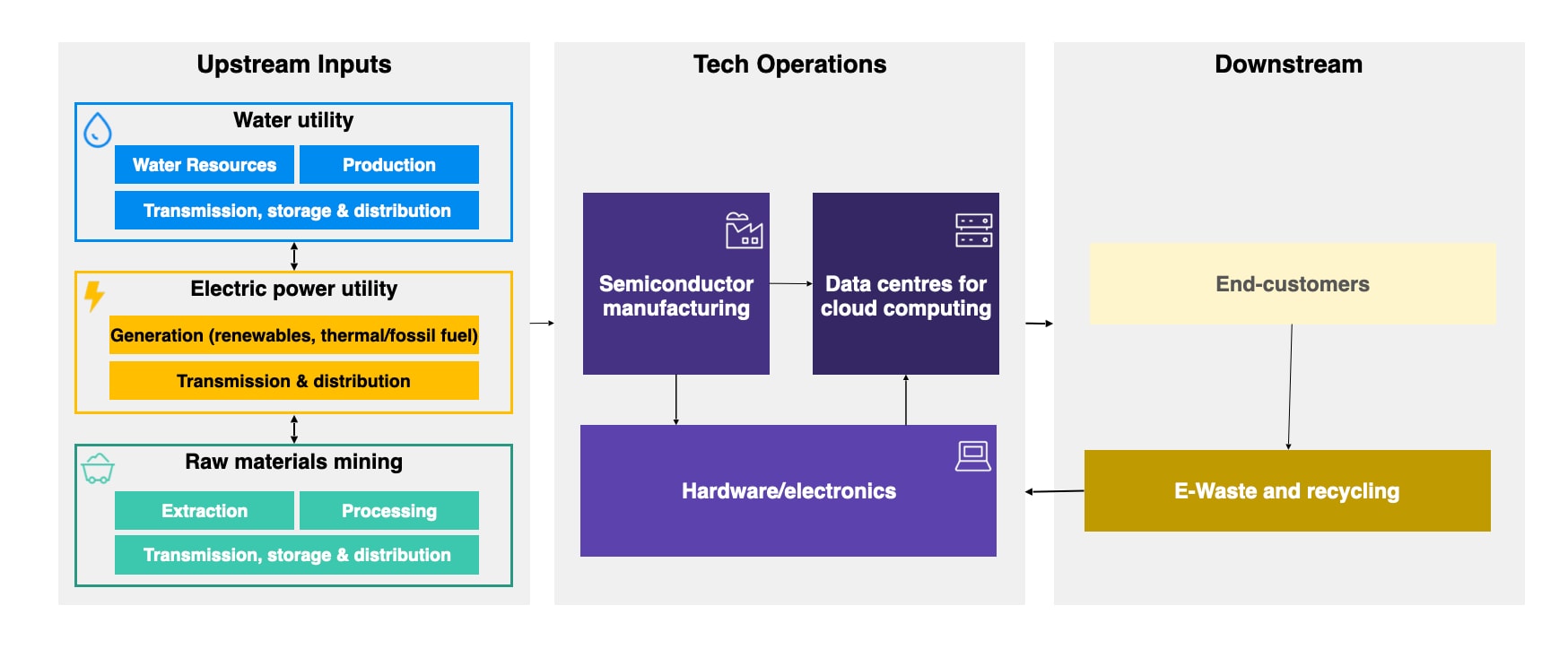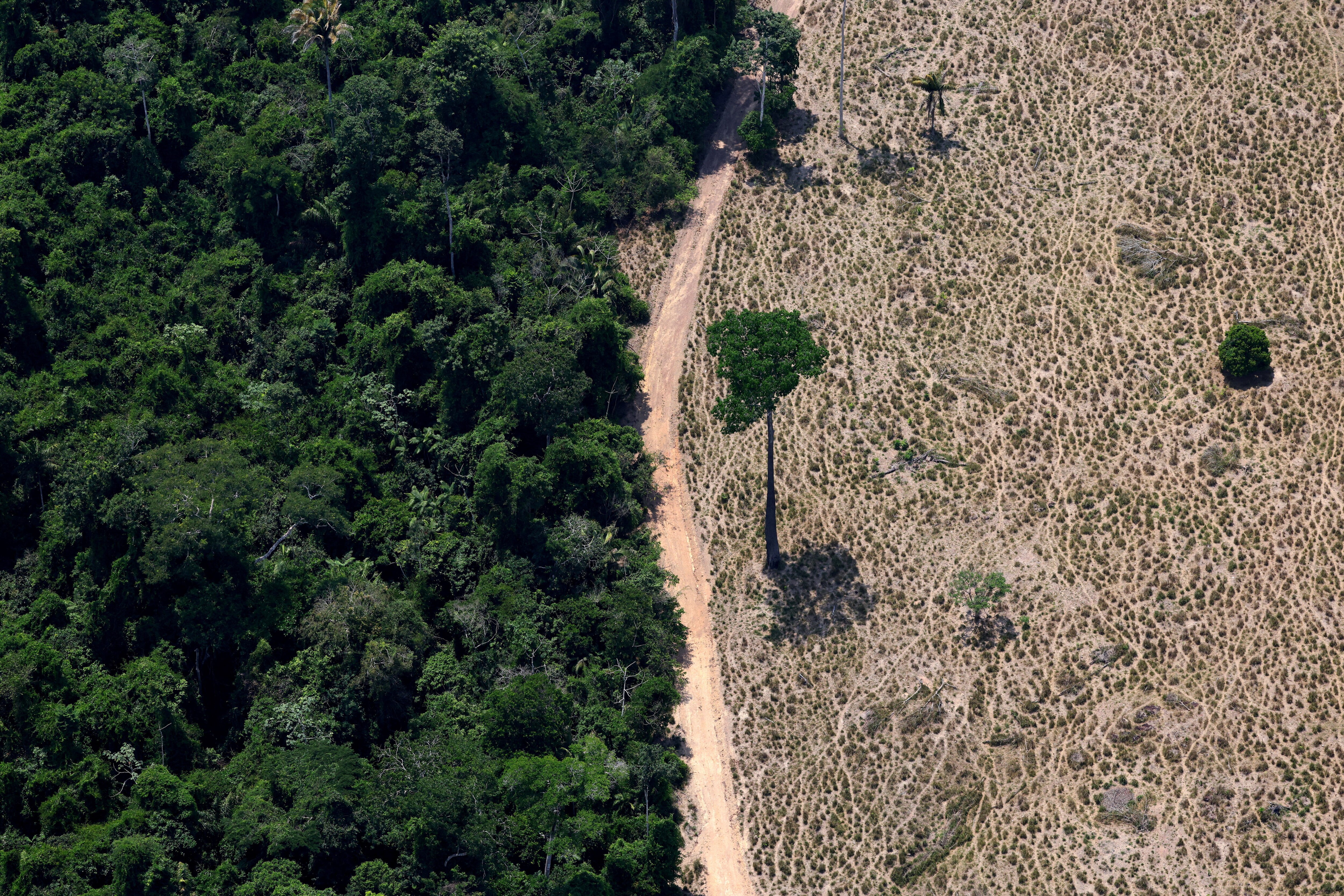Addressing the tech sector's nature impacts and dependencies is a prerequisite for growth

Nature positive action is a business imperative and opportunity. Image: Getty Images
- The technology sector – valued at $8.9 trillion in 2024 and poised to grow 40% by 2029 – relies heavily on natural resources and ecosystem services.
- If not properly managed, the tech industry contributes significantly to environmental degradation through water stress, pollution, greenhouse gas emissions, waste and land-use change.
- Nature positive action is a business imperative and opportunity – sustainable growth in tech requires proactive strategies to mitigate environmental impact and build resilience.
Nature is the foundation of the global economy. Over half the world’s gross domestic product (GDP) – $44 trillion – is moderately or highly dependent on nature and its services, and its preservation is not only an environmental imperative but also an economic opportunity.
The World Economic Forum’s Nature Positive Transitions initiative explores transformative pathways to halt and reverse nature loss by 2030: guiding financial institutions, helping cities coexist in harmony with nature and developing sector strategies for corporations.
For each sector, corporate partners and nature experts collaborate to identify the sector’s unique impacts and dependencies on nature and recommend priority actions that businesses can take to address impacts, build resilience and unlock nature-positive opportunities across their value chains.
This year, the initiative, in collaboration with Oliver Wyman, is turning its focus to the technology sector. A pathway for a nature-positive tech sector is critical. The sector is pivotal in driving economic growth and innovation and has already reached a market size of $8.9 trillion in 2024 (larger than the GDP of all but two countries).
High projected demand for artificial intelligence (AI), for example, will drive further growth and increase pressures on the environment. At the same time, new technologies can play a role in addressing the nature crisis – from supporting water and energy efficiency to monitoring conservation and biodiversity efforts.
Tech's dependence on nature
The tech sector is broad and diverse, encompassing fields such as cloud computing, AI and semiconductor and hardware manufacturing. Although many may not realize it, tech is intrinsically interlinked with nature, especially related to its water and energy use.
Beyond direct operations – such as data centres or semiconductor manufacturing – there are also key challenges in upstream and downstream supply chains, ranging from electric power and water utilities to mining operations, which help meet demand for copper, silicon and other essential minerals.

The entire value chain is deeply dependent on nature, including key ecosystem services:
- Water inputs – Tech has a high dependency on water for cooling and energy production. Large-scale 100 megawatt (MW) data centres can require as much as 2.5 billion litres of water per year, equivalent to over 1,000 Olympic swimming pools. Semiconductor manufacturing is even more water-intensive, with large facilities using 2.5-5 times this volume.
- Global climate regulation – The technology sector is dependent on a stable climate, given the sensitivity of its operations to temperature and the energy and water inputs required for cooling.
- Erosion and flood control – The sector depends on stable soils and flood control to ensure stable operations and secure infrastructure for mining inputs and energy production.
- Weather mitigation and rainfall patterns – Technology’s upstream supply chain is moderately dependent on stable weather, as weather patterns can affect energy production, especially renewable energy such as solar and wind, and threaten metal and mineral extraction operations.

The environmental cost of tech
Alongside dependencies, the sector can also contribute to nature loss if not managed correctly, including:
- Water stress – Cooling mechanisms in data centres, semiconductor production and required thermal energy production produce discharge into water sources and cause local water loss through evaporation. Upstream raw materials extraction in the mining industry also requires material volumes of water, while 16% of critical mineral mines are based in areas with high or extreme water stress.
- Greenhouse gas emissions – Thermal power plants fueling data centres and production facilities generate significant greenhouse gas emissions. A single data centre can require over 100 megawatts (MW) – enough to cover the energy needs of more than 82,000 US homes. Meanwhile, semiconductor manufacturing relies on several high global warming potential greenhouse gases such as perfluorocarbons and hydrofluorocarbons, often releasing a share of these gases into the air.
- Pollution – Mining for critical minerals can pollute soil, water, and air through the release of heavy metals, toxic chemicals and dust while also disrupting wildlife with noise and light. The semiconductor manufacturing process generates waste material containing heavy metals that can contaminate soil and water and can emit volatile organic compounds, in addition to releasing some per- and polyfluoroalkyl substances (PFAS), which have known health impacts.
- Waste – Electronic waste, also known as e-waste, is a byproduct of equipment end-of-life and manufacturing processes. In 2022, the world generated over 62 million tons of e-waste, with less than a quarter of it being recycled. Enough e-waste goes to landfills each year to cover an area the size of Manhattan over one metre deep.
- Land-use change and ecosystem disturbance – The siting of tech facilities can lead to soil degradation and habitat destruction, with ensuing impacts on biodiversity. Tech’s reliance on mined metals and critical minerals amplifies this direct land-use change by orders of magnitude.

Nature positive enables growth
Globally, there are over 11,000 data centres today, consuming over 400 billion litres of water annually and requiring over 60 gigawatts (GW) of power, enough for the state of California. Global semiconductor manufacturing is even more water-intensive, consuming over 1.1 trillion litres of water annually, more than the entire country of Denmark.
The sector will continue to grow, driven by increased demand for AI, accelerated adoption of cloud computing and surging electronics demand. The sector’s market size may reach over $13 trillion by 2029, a 40% growth from 2024. By 2030, data centres may require over 620 billion litres of water annually and over 140 GW of power.
Semiconductor manufacturing may need more than two trillion litres of water by 2035. Exactly how the sector and its relationship with nature evolve will depend on a variety of factors, including regulation and policies, new technologies, and consumer and business behaviour. In any case, the scale of the challenge will be substantial.
Fortunately, the future of tech’s relationship to nature can be positive, with the right industry leadership. For tech companies, addressing their relationship with nature is more than the right thing to do – action will enable the sector’s ambitious plan for growth.
As awareness and concern grow from communities and local governments, so too will public scrutiny – in the United States, the largest global market for data centre development to-date, $64 billion of data centre projects have been halted or delayed by local opposition since 2023.
For tech, as for many other sectors, nature-positive action is good business, providing the license to operate in the long term and ensuring sustainable growth.
The Nature Positive: Role of the Tech Sector report will be available in late 2025, with more work in progress on opportunities for the tech sector to lead on nature action. Please reach out to the authors if you have ideas or wish to get involved.
Jake Zastrow, Associate, Oliver Wyman (MMC), also contributed to this article.
Don't miss any update on this topic
Create a free account and access your personalized content collection with our latest publications and analyses.
License and Republishing
World Economic Forum articles may be republished in accordance with the Creative Commons Attribution-NonCommercial-NoDerivatives 4.0 International Public License, and in accordance with our Terms of Use.
The views expressed in this article are those of the author alone and not the World Economic Forum.
Stay up to date:
The Digital Economy
Forum Stories newsletter
Bringing you weekly curated insights and analysis on the global issues that matter.
More on Nature and BiodiversitySee all
Tom Crowfoot
December 10, 2025






